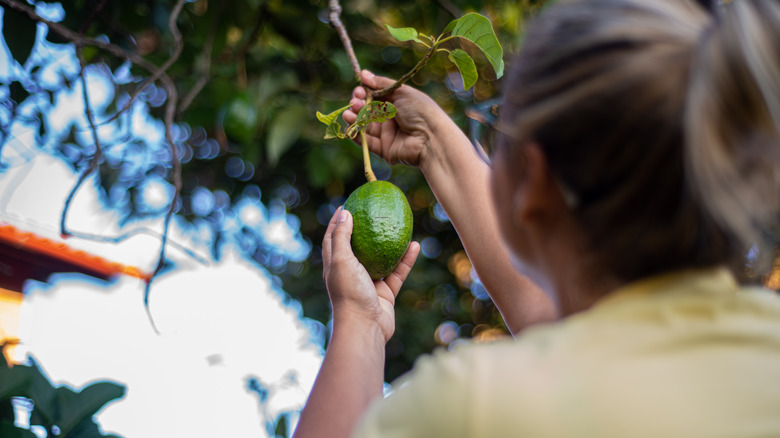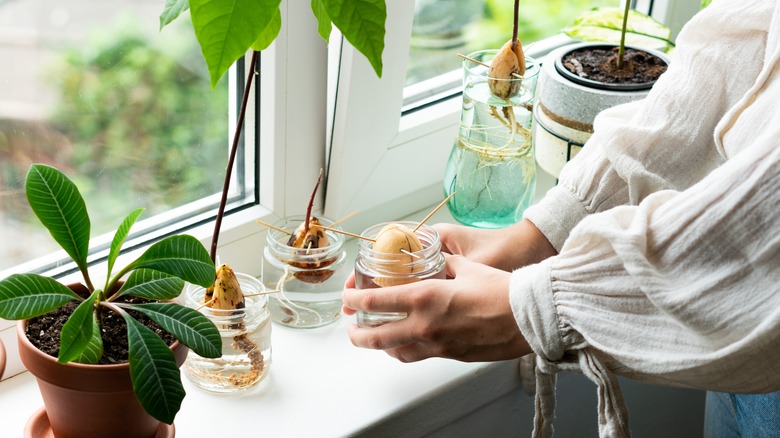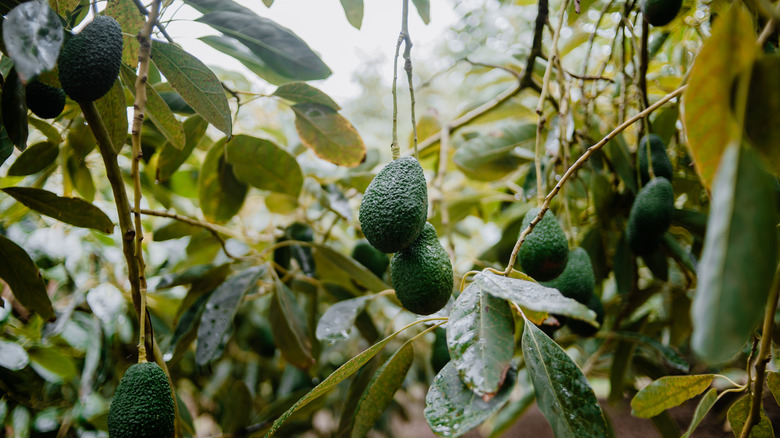When Can You Expect To See Fruit On Your Avocado Tree
From avocado toast to avocado smoothies and, of course, guacamole, the holy grail fruit of the avocado tree is prized for its nutritious and delicious qualities. To grow and care for an avocado tree can be a rewarding experience for any gardener. One of the most common questions among avocado growers is, "When will my tree start bearing fruit?" The answer to this varies depending on several factors, including the type of avocado (there are over 500 varieties), growing conditions, and care.
These trees thrive in warm, sunny climates and can grow over 40 feet tall in the right conditions. However, most cultivated varieties for home gardens are much smaller. Regardless of what variety you choose, and whether your tree is meant for a sunny spot outside or in a container inside, the name of the game is patience. While planting an avocado tree is relatively easy, it can take anywhere from three to 13 years to bear fruit.
The avocado journey from pit to fruit
Typically, avocado trees take seven to 10 years to mature. However, fruit-bearing timelines can vary widely. Trees grown from seed can take five to 13 years to produce fruit, whereas grafted plants might start fruiting within three to four years. The variety of the avocado tree also influences when it will bear fruit. For instance, Hass avocados usually begin to bear fruit in their third year, while other varieties might take longer.
To help your avocado tree bear fruit, you must follow a balance of sun, soil, watering, and other care factors. If you plan to grow your tree outdoors, make sure you reside in USDA zones nine through 11. Otherwise, it would have to be grown indoors in proper conditions, especially during the winter. Avocado trees thrive in sun-soaked areas but can be sensitive to harsh direct sunlight. If your tree has matured, the optimum fruit set tends to happen at temperatures ranging from 70 to 100 degrees Fahrenheit. Soil must have a pH between 6 and 6.5, with good drainage.
Watering is crucial, especially in the tree's early stages. The soil should be kept consistently moist but not soggy — as overwatering can lead to root rot. Mulching and fertilizing are essential. For mulch, redwood bark, cocoa bean husks, and anything like coarse yard mulch would work well. Fertilize your avocado tree about four to six times a year with a fertilizer rich in nitrogen, zinc, and manganese.
Care tips for your avocado tree
Certain factors may delay the fruits of your avocado tree. Although pruning helps shape and promote healthy growth (especially in the spring and summer), you must be cautious not to over-prune. This can stress the tree, which will then prevent it from fruiting as early as you may like. Drought, extreme temperatures, and poor soil quality can also delay fruit production. Beware of pests and diseases, like thrips and root rot. Neem oil can help control pest infestations.
A mature tree can produce 200 to 300 fruit yearly, but yield quantities alternate — one year, you may get a massive crop, while in the next, a more humble one. As far as longevity goes, your tree will keep growing and bearing avocadoes unless something kills it. Young trees might produce flowers and fruit, but often, the tree will drop these early as it's not yet strong enough to support fruit development — this is normal. Over time, this will change unless the cause of the fruit drop is a greater problem like stress, pests, or a disease.
Avocados do not ripen on the tree. They need to be harvested off the tree when mature and then ripened, preferably indoors. A mature avocado generally has a slight give when pressed gently. If they ripen properly and taste good, it's time to harvest the rest of your tree. Not many gardeners get to this point, but for those that do, the reward is immense. With the right conditions and some generous patience, your avocado tree will be a source of pride and delicious fruits for years to come.


